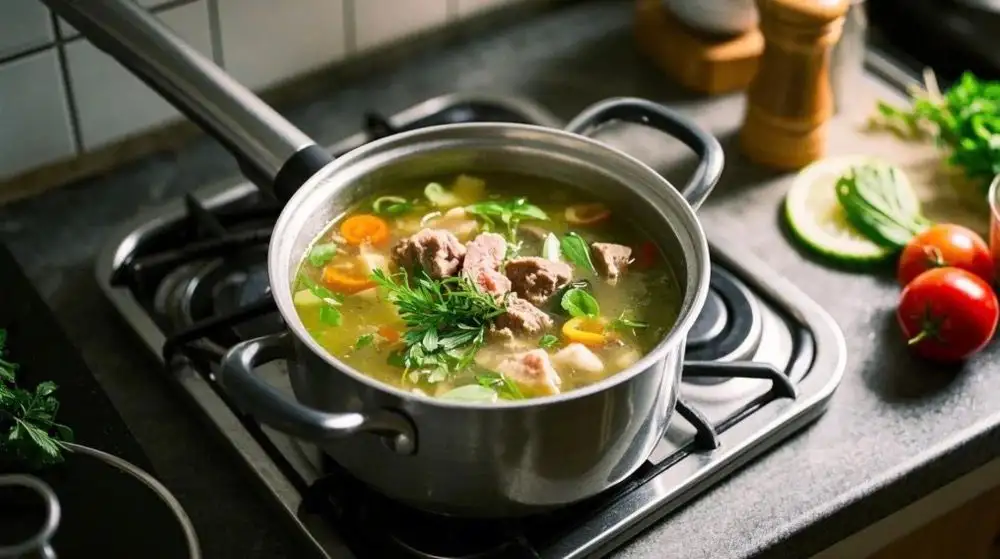How to Make Healthier Versions of Classic Dishes
Classic dishes are often beloved for their rich flavors and comforting appeal, but they can also be high in calories, fat, and sodium. Fortunately, you can enjoy your favorite meals while making them healthier through smart ingredient swaps and simple cooking techniques. Whether you're craving traditional Southeast Asian cuisine or global favorites, here are practical ways to make healthier versions of classic dishes without sacrificing taste.
1. Lighten Up Fried Foods
Many classic Southeast Asian dishes, like spring rolls, fried chicken, and tempura, are deep-fried, which increases their calorie and fat content. To make these dishes healthier:
Healthier Techniques:
- Air Frying: Use an air fryer to achieve a crispy texture with less oil. This method reduces fat content significantly while preserving the crunch.
- Baking or Grilling: For items like spring rolls or chicken, bake them at a high temperature or grill them for a smoky flavor with fewer calories.
Example Swap:
- Replace deep-fried spring rolls with fresh Vietnamese rice paper rolls packed with vegetables and lean protein.

2. Reduce Sodium in Soups and Broths
Southeast Asian soups like pho, laksa, and tom yum can be high in sodium due to fish sauce, soy sauce, and broth. Lowering the sodium without compromising flavor is possible with these tips:
Healthier Techniques:
- Homemade Broth: Make your own broth using fresh herbs and spices instead of relying on store-bought versions with added salt.
- Reduced-Sodium Sauces: Use low-sodium soy sauce, fish sauce, and other condiments to control salt levels.
Example Swap:
- Prepare a homemade pho broth with bone-in chicken or beef and season it with spices like star anise and cinnamon rather than relying on salt-heavy bouillon cubes.
3. Use Whole Grains
Rice and noodles are staples in Southeast Asian cuisine, but refined grains can lack fiber and essential nutrients. Switch to whole grains for a healthier twist.
Healthier Techniques:
- Brown Rice: Replace white rice with brown rice for extra fiber, vitamins, and a nuttier flavor.
- Whole-Grain Noodles: Use whole-grain noodles or rice noodles made from brown rice for dishes like pad Thai or stir-fries.
Example Swap:
- Use brown rice for Thai basil stir-fry instead of white jasmine rice.
4. Boost Vegetable Content
Adding more vegetables to classic dishes increases fiber, vitamins, and antioxidants while reducing calorie density.
Healthier Techniques:
- Half-and-Half Method: Replace half the meat with vegetables like mushrooms, bell peppers, or leafy greens.
- Spiralized Vegetables: Use spiralized zucchini or carrot noodles to replace part of your noodle servings.
Example Swap:
- Add extra vegetables to pad see ew or stir-fried dishes to increase nutritional value.
5. Choose Lean Proteins
Fatty cuts of meat are common in many classic dishes, but lean proteins can deliver the same satisfying taste with fewer calories and less saturated fat.
Healthier Techniques:
- Lean Cuts: Use skinless chicken breast, tofu, or seafood instead of fattier cuts of pork or beef.
- Plant-Based Proteins: Incorporate legumes like lentils or chickpeas for a plant-based protein boost.
Example Swap:
- Make rendang with lean chicken breast instead of beef and use coconut milk lite to reduce fat content.
6. Cut Down on Sugar
Many sauces, marinades, and desserts rely heavily on sugar. You can reduce sugar while maintaining the essence of sweet, savory, and tangy flavors.
Healthier Techniques:
- Natural Sweeteners: Use honey, coconut sugar, or fruit purees in moderation instead of refined sugar.
- Balanced Flavors: Enhance other flavors (like citrus or spices) to reduce the need for added sugar.
Example Swap:
- Prepare a healthier Thai iced tea by reducing condensed milk and sweetening it with a touch of honey.
7. Use Healthier Fats
While Southeast Asian cooking often relies on coconut milk and palm oil, using healthier fats can reduce saturated fat intake.
Healthier Techniques:
- Coconut Milk Lite: Use light coconut milk in curries for a lower-fat alternative.
- Olive Oil: Use heart-healthy oils like olive or avocado oil for stir-frying and dressings.
Example Swap:
- Make green curry with light coconut milk instead of the full-fat version.
8. Portion Control Matters
Enjoying classic dishes in moderation is key to maintaining a balanced diet. Be mindful of portion sizes while savoring your favorite meals.
Healthier Techniques:
- Smaller Plates: Serve meals on smaller plates to manage portion sizes.
- Balanced Plate: Aim for a balance of protein, vegetables, and whole grains on your plate.
Example Swap:
- Serve smaller portions of nasi lemak and increase the side of fresh vegetables to balance the meal.

9. Healthier Desserts
Southeast Asian sweets like mango sticky rice and pandan cakes can be rich and sugary. With a few adjustments, you can make them healthier.
Healthier Techniques:
- Fruit-Based Desserts: Focus on fresh tropical fruits like mango, papaya, and dragon fruit for natural sweetness.
- Reduced Sugar: Use less sugar and coconut cream in traditional desserts.
Example Swap:
- Make a lighter version of mango sticky rice using brown rice and less coconut milk.
Final Thoughts
Transforming classic dishes into healthier versions is easier than you might think. By making simple ingredient swaps, adjusting cooking techniques, and focusing on whole, fresh foods, you can enjoy your favorite Southeast Asian meals while maintaining a balanced diet. These changes allow you to indulge in the vibrant flavors you love while nourishing your body and supporting a healthier lifestyle.
wendy
|
2025.03.14




